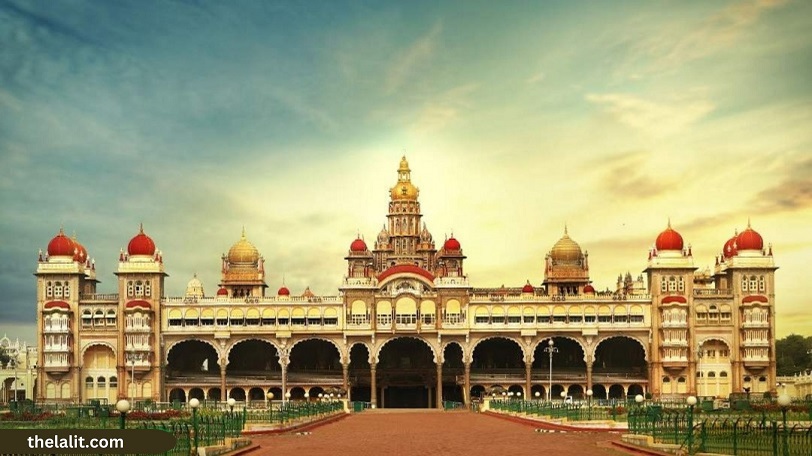Mumbai, one of India’s busiest metropolitan cities, is also home to several foregone structures and historical landmarks. These sites, today, form an integral part of the country’s rich history as well as culture. When we think of Mumbai, the images that conjure in our mind are usually of high-rise buildings, bustling roads, the seaside and undoubtedly, Bollywood. However, the ancient structures of the majestic Elephanta Caves are just 11km away from the bustling city on the island of Elephanta, also known as Gharapuri. Remnant of medieval India, Elephanta Caves Mumbai are one of the leading tourist attractions of the city; besides other destinations such as Gateway of India, Haji Ali Dargah and Sanjay Gandhi National Park
About Elephanta Caves Mumbai
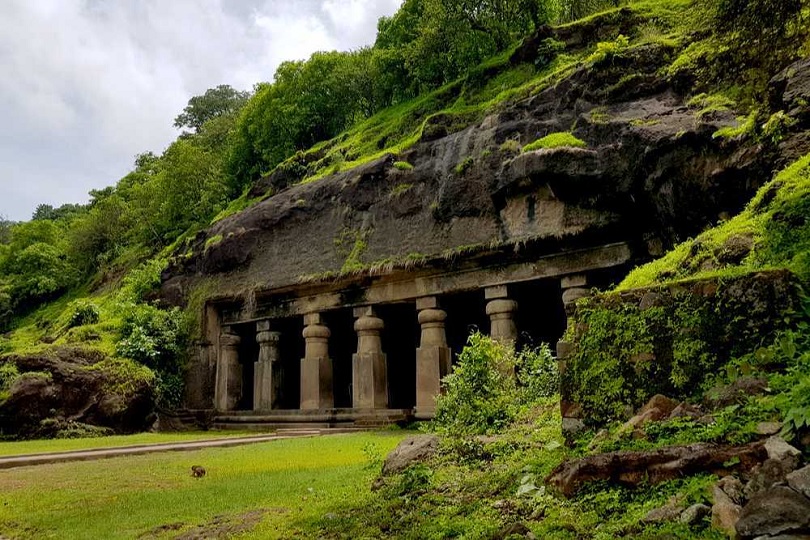
A UNESCO World Heritage Site, Elephanta Caves are a collection of rock-cut art temples dedicated to Lord Shiva and Buddha. Locally known as Gharapurichi Leni, these caves are one of India’s most exemplary rock-cut architecture specimens. They are now in ruins compared to the time when these were detailed painted artworks. However, the course of several centuries hasn’t lowered the appeal of these significant structures and history buffs, architecture lovers and adventure enthusiasts from all over the world visit these caves with a lot of excitement.
The caves are divided into two groups of alcoves, with the first consisting of 5 Hindu caves and the second comprising 2 Buddhist caves. The Hindu caves have several stone sculptures dedicated to the Shaiva Hindu Sect. These caves are often beheld as an expression of art and have several sculpted images. The most notable structures are ‘Ardhnareshwar’, a representation of Lord Shiva and Goddess Parvati in the same body, ‘Trimurti’, three-headed Shiva which signifies the three essential aspects of the Lord, namely creation, protection and destruction and ‘Gangadhar’, a sculpture which shows the manifestation of the holy River Ganga as she came on Earth.
- Elephanta Caves Timing: 9:00 AM to 5:30 PM (Closed on Mondays)
- Elephanta Caves Mumbai Entry Fees: INR 10/- for Indians and SAARC nationals; INR 250/- for Foreigners; Free for children under 15 years of age.
- Location: Elephanta Island
Elephanta Caves History
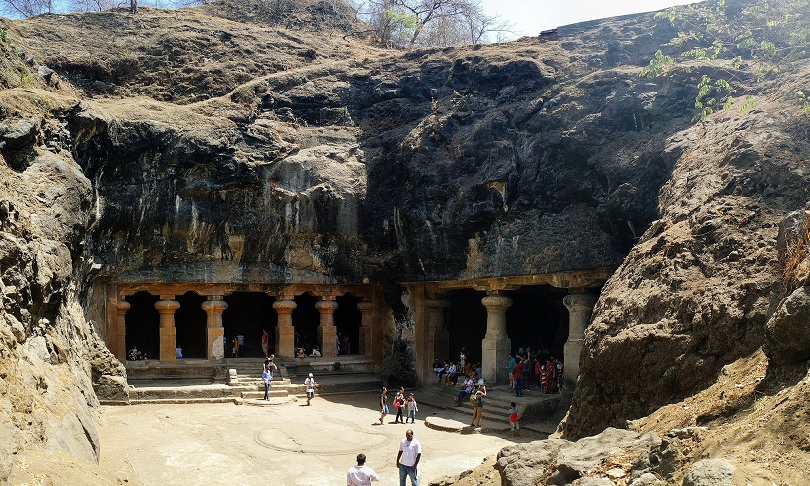
While there is no solid evidence of the time at which the Elephanta Caves were constructed, historians date its inception back to the late 5th to 8th AD with inferences drawn from numerous sources. While some of them believe that Pandavas constructed the caves, others attribute their establishment to Banasura, a devotee of Lord Shiva. There is also documentation that states that Pulakesi II defeated the Mauryas of the Konkan empire, the emperor of Badami Chalukyas. During the rule of the Konkan Mauryas, Elephanta was the empire’s capital and was known as Puri or Purika. Therefore, there is a possibility that the caves were also built during the empire’s reign.
It is believed that after being ruled by Chalukyas, the caves were captured by the Gujarat empire, and it was ultimately surrendered to the Portuguese in 1534. Since then, the caves observed extreme deterioration till 1661 when they came under the control of the British regime.
The restoration work of the main cave was done in 1970, and the caves were declared a UNESCO World Heritage Site in 1987. Ever since then, Elephanta Caves has attracted thousands of tourists from across the world every year and is now also a significant trekking destination near Mumbai.
Also Read: Famous Khajuraho Temples
Elephanta Caves: Architecture
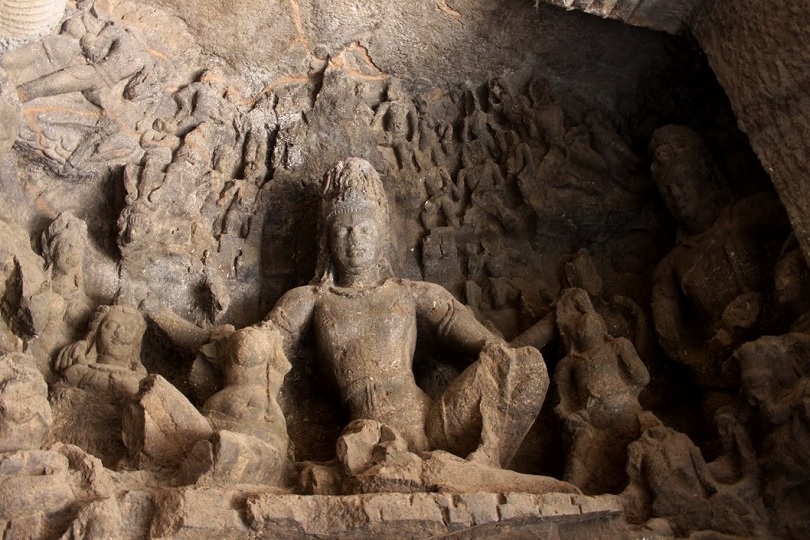
The entire complex of Elephanta Caves Mumbai is spread across 60,000 square feet of land and consists of a total of 7 caves, further divided into two parts. Constructed out of solid basalt rock, the first set of Hindu caves have several rock sculptures and rock-cut temples, while the 2 Budha caves, a Stupa, and water tanks make up the second smaller half of the entire complex.
The main cave at the complex was a place of worship under Portuguese rule and comprised a pillared mandap, an aisle and open porticoes. The cave, also known as Cave 1 or Grand Cave, is spread across 39 meters and is the biggest. Statues, including that of Ardhanereshwar, Gangadhara and Trimurti, are located in this cave. Besides the structures, the cave also has a statue of Lord Shiva and Goddess Parvati seated on the Kailash Parvat, Ravana picking the Kailash Mountain, imagery or depiction of Lord Shiva’s wedding, Shiva performing Taandav which is also known as his Natraja form, Shiva Linga and Yogishvara. All the structures and images are carved with intricacy, and the cave has an architecture unlike any other in the world.
Besides these magnificent structures, there are several other representations of deities are spread across different locations in the complex.
Best Time To Visit Elephanta Caves
The most appealing time to visit Elephanta Caves is during the winter months, from November to February. Avoid visiting the caves during the monsoon season as the sea tends to become unpredictable, and scheduled ferry rides can cancel for the same reason. Elephanta Caves’ timing is 9:00 AM to 5:30 PM, but the caves remain closed on Monday.
How To Reach Elephanta Caves
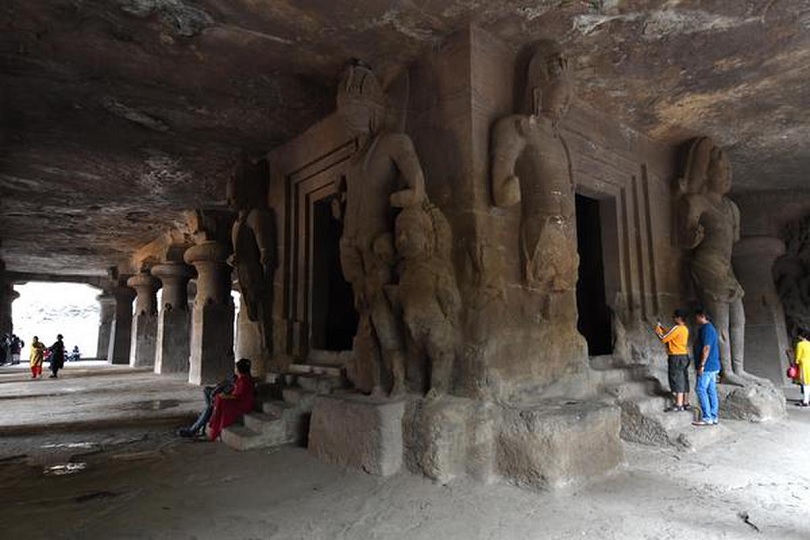
Elephanta Caves are located approximately 11km from Mumbai Harbour and on an island. You can reach this complex by hopping on a ferry starting at Apollo Bunder near Gateway Of India. These ferry rides are an initiative by Maharashtra Tourism Development Corporation and the first one leaves at 9:00 AM, while the last ferry of the day is scheduled to leave at 2:00 PM. Once on the island, you can take a hike of 120 difficult steps up to the cave complex or enjoy a toy train to reach the entrance.
- Ferry Ride Charges: INR 150/- for adults, INR 125/- for kids between the age of 3 to 7
- Toy Train Charges: INR 10/-
History, splendid architecture, and the rich culture at the Elephanta Caves Mumbai will surely leave you mesmerized. As you plan to visit the bustling City of Dreams, book your stay with us at The LaLiT Mumbai. Our luxurious hospitality is complete with award-winning restaurants and top-notch facilities that take your stay to the next level. So make your travel plans to this majestic site soon and experience the best of Mumbai with us.

